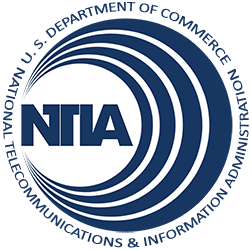To benefit public safety and first responders in a 1,200 square mile area that includes Adams County and the Denver International Airport, which is the largest airport by size in the United States, the Adams County Communications Center (ADCOM) aims to deploy a 700 MHz interoperable wireless broadband network for use by the approximately 2,000 first responders from agencies operating within the Adams County and airport service areas. The project proposes to interconnect public safety answering points (PSAPs), municipal governments, and school districts in Adams and Jefferson Counties, and the cities of Commerce City, Brighton, Thornton, and Northglenn, as well as a large unincorporated region, making the project area a unique mix of urban, suburban, and rural populations. The project’s first responders aim to use a variety of end-user devices to access the network for a wide range of data needs including HAZMAT database query and records access, criminal checks, access to the public Internet, airport perimeter security, emergency runway clearance, Automatic Vehicle Location, and video- based applications.
Colorado

Colorado’s low-income and rural populations depend heavily on public libraries for Internet access, which is an important tool for creating economic opportunities in a state with significant high school dropout rates and low college attendance. The Colorado Board of Education proposes to spearhead a statewide public computer center upgrade and expansion project in 76 urban and rural communities, including 49 public libraries, school libraries, and the two Ute tribal libraries. The project proposes to add or replace more than 1,100 mobile and desktop computers and improve library services for people with disabilities. The project also proposes a statewide public awareness campaign to promote the training and assistance available, and encourage broadband adoption and public computer center use among vulnerable populations in the state. The project aims to serve a region with more than half a million Hispanic or English-as-a-Second-Language-classified residents.
Project Components
State Broadband Capacity Building:
Colorado’s Office of Information Technology (OIT) will organize a statewide broadband taskforce focused on improving broadband conditions for interactive educational uses. Leveraging the expertise of the taskforce, and providing valuable data for the state, this project will pilot e-learning education in primary and secondary schools in 12 Boards of Cooperative Educational Services throughout the state. The taskforce will assess the impact of these projects as it determines its policy recommendations for the State of Colorado.
Application Usage and Development:
Through this project, the State of Colorado will develop a data accessibility project that reflects and builds on the Federal government’s efforts with data.gov. OIT will utilize a portion of the funding to increase citizen engagement in government through broadband. These activities will foster increased transparency throughout Colorado and serve as a model for state-level data dissemination.
Data Collection, Integration, and Validation:
This project was originally funded for broadband planning activities and two years of data collection. In September of 2010, this project was amended to extend data collection activities for an additional three years and to identify and implement best practices.
Address File Development:
OIT will collect and add to current county data and deploy a crowdsourcing tool to improve address file quality. OIT will validate county information against data from the Colorado Division of Motor Vehicles and Secretary of State’s Office. This project will also work with counties to train emergency service personnel to collect and verify address location information.
Broadband’s ability to expand educational and employment opportunities is especially meaningful for Americans who are deaf or hard of hearing, a community that faces unique challenges in education and that suffers from a rate of unemployment much higher than the national average. Communication Service for the Deaf, Inc. (CSD) intends to expand broadband adoption among people who are deaf and hard of hearing and provide them with online tools to more fully participate in the digital economy. The project proposes to employ a combination of discounted broadband service and specialized computers, technology training from an online state-of-the art support center customized to the community’s needs, public access to videophones at anchor institutions from coast to coast, and a nationwide outreach initiative. Thousands will gain online access to all the Internet has to offer, including sign language interpreters, captioned video services, and other content and functionalities designed especially to advance their educational, employment, and healthcare interests.
The Mission Economic Development Agency, in collaboration with the National Association for Latino Community Asset Builders and a national network of Latino-serving economic development organizations, plans to create 12 new public computer centers and expand five existing ones in 13 communities throughout the United States. Each center expects to operate on the project’s centrally managed network and provide computer training and adult education to a low broadband adoption, high unemployment target population through a standardized English-Spanish training curriculum. The project expects to add a total of 263 new workstations and replace 37 existing workstations, enabling the centers to serve an additional 2,500 users per week and train an estimated 3,000 users per year. Broadband capabilities at each center will be increased to speeds of 1.5 Mbps. Public computer centers funded through this grant will be located in Phoenix, AZ; Canoga Park, Los Angeles, and San Francisco, CA; Del Norte, CO; Blackfoot, ID; Wheaton, MD; Minneapolis, MN; Kansas City, MO; Anthony, NM; Philadelphia, PA; and San Antonio and Laredo, TX.
As part of a longstanding project to connect essential community anchor institutions across the country, and facilitate closer collaboration and long-term benefits for education, research, healthcare, public safety, and government services, the University Corporation for Advanced Internet Development (UCAID) proposes a comprehensive 50-state network benefitting approximately 121,000 community anchors. The project proposes a large-scale, public-private partnership to interconnect more than 30 existing research and education networks, creating a dedicated 100-200 Gbps nationwide fiber backbone with 3.2 terabits per second (TBps) total capacity that would enable advanced networking features such as IPv6 and video multicasting. The project plans to connect community anchors across all disciplines into virtual communities with shared goals and objectives, including colleges, universities, libraries, major veterans and other health care facilities, and public safety entities, with additional benefits to tribes, vulnerable populations, and government entities.
Colorado’s Centennial Board of Cooperative Educational Services (CBOCES), a state agency, is proposing a public-private partnership to bring broadband service to school districts, libraries, and community anchor institutions across Colorado. The project would address the lack of affordable high-capacity broadband access at many rural and underserved school districts and educational institutions, many of which currently rely on outdated copper-based telecommunications facilities. The proposed Educational Access Gateway Learning Environment Network (EAGLE-Net) is a hybrid of more than 1,600 miles of terrestrial fiber and 3,000 miles of microwave wireless broadband expanding services across each of Colorado’s 64 counties.
